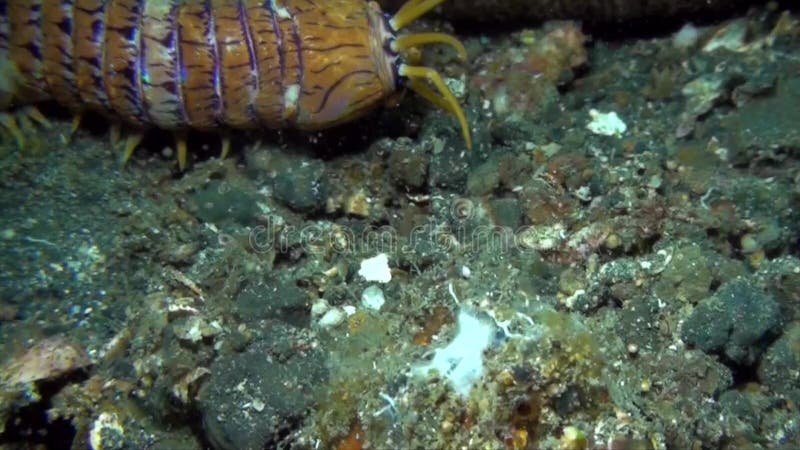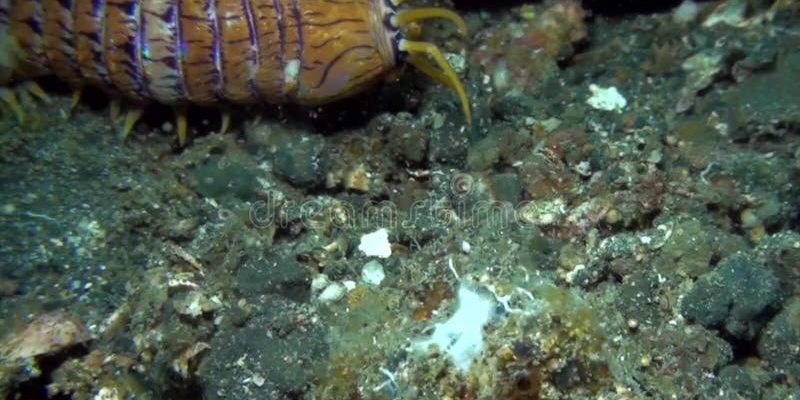
Bobbit worms, or *Eunice aphroditois*, can be quite striking. They can grow up to ten feet long, with a flashy array of colors that can range from green to red. Picture a colorful, tube-like creature peeking out from the sand, ready to snatch up any unsuspecting prey that comes too close. This unique behavior is part of what makes them so interesting, but it also leads to questions about their daily habits. It’s like pondering whether a nocturnal animal might surprise you by roaming around during the sunlight hours. Let’s explore this phenomenon further.
Understanding Bobbit Worm Behavior
Bobbit worms are known for their **fascinating hunting techniques**. They spend most of their lives buried in sand or mud, leaving only their segmented bodies exposed. The exposed part acts like a fishing line, waiting for prey to wander too close. But what drives their hunting habits? To understand their activity patterns, we need to consider their natural habitat.
These worms thrive in **tropical and subtropical waters**, often found in coral reefs or near rocky substrates. They rely on two primary factors: **light and temperature**. Generally, their hunting instincts kick in more during the night, when it’s darker and prey are more active. Essentially, they’re like successful night-time predators lurking in the shadows. But are they completely inactive during the day?
Do Bobbit Worms Come Out During the Day?
You might be itching for a straightforward answer. Here’s the thing: while Bobbit worms prefer the cover of darkness, they can be active during the day, though this is less common. This might seem unusual, but it all comes down to their environment and circumstances. For example, if they’re in an area with less predator activity, you might spot one during daylight hours.
What’s particularly intriguing is how their behavior can vary by location. In shallower waters with plenty of light, Bobbit worms may take advantage of strategic hiding spots. Meanwhile, in deeper areas where light doesn’t penetrate, they might feel more at ease to roam during the day. So, the answer isn’t black and white—it really depends on the individual worm and its surroundings.
How Bobbit Worms Sense Their Environment
Bobbit worms have a highly developed sense of touch and a keen ability to detect movement in the water. Their **antennae** and **body hairs** act as sensory organs, helping them understand their surroundings—much like how we use our senses to navigate the world around us. This means they can pick up on vibrations and changes in the water, which can alert them to potential food or threats.
During the day, when the sun shines brightly above, they might be more cautious. The light could expose them to predators like fish and other sea creatures. So even if they do come out for a quick snack, they need to be on high alert. If you’re ever scuba diving or snorkeling, spotting a Bobbit worm might be a fleeting moment, as they’ll quickly retreat into their sandy burrows if they sense danger.
The Role of Light in Bobbit Worm Behavior
Light plays a crucial role in the **daily cycle of Bobbit worms**. Like many creatures, they have adapted their lifestyles based on light exposure. In the wild, light can signify safety or peril. During bright daylight hours, the shadows of the ocean floor provide cover, allowing worms to remain hidden from larger fish that would gladly make a meal out of them.
As mentioned earlier, Bobbit worms tend to be nocturnal. In the dark, they can venture out to hunt with less risk of being seen. So if you’re ever curious as to whether they’re out and about during the day, a good rule of thumb is: the brighter it is, the more likely they’ll stay buried.
Impacts of Predation on Bobbit Worm Activity
The dynamics of the underwater food chain heavily influence when Bobbit worms come out. Predators like fish or crabs can often disrupt their routines. As active hunters, these creatures are constantly in search of a meal, making it a dangerous world for the Bobbit worm.
Interestingly, scientists have found that when these worms sense the presence of potential predators, they can become **more active at night**. This behavior not only helps them escape danger but also ensures they are still able to feed themselves. The ocean is a constant dance of predator and prey, and Bobbit worms have intricately woven themselves into this rhythm.
Can You Keep Bobbit Worms in Aquariums?
If you’re fascinated by Bobbit worms, you might be thinking about keeping one in a home aquarium. While these creatures can make for interesting pets, they aren’t the easiest to care for. Since they often bury themselves and prefer specific living conditions, you’ll need to replicate their natural habitat as closely as possible. This means maintaining proper salinity, water temperature, and substrate type.
You should also consider their diet. Bobbit worms are carnivorous, so they’ll need a steady supply of meaty foods, like shrimp or fish. Another factor to think about is their potential size. Some Bobbit worms can grow quite large, which may lead to issues in smaller tanks. Plus, they can be predatory, so careful consideration is needed if you plan on introducing them into a community tank.
So, do Bobbit worms come out during the day? The answer is a bit nuanced. While they primarily prefer the safety of night, they can venture out when the conditions are right. The key is understanding their environment, the presence of predators, and, of course, the allure of dinner.
If you’re ever lucky enough to spot a Bobbit worm, keep in mind the role they play in their ecosystem. They may look a bit like oceanic ninjas, but they add a unique flair to marine life. So next time you think about these elusive creatures, remember their hidden quirks and intriguing behavior—it’s all part of the charm of the underwater world!

